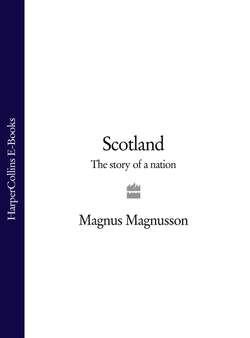Читать книгу Scotland: The Story of a Nation - Magnus Magnusson - Страница 38
The death of Malcolm
ОглавлениеThere was to be one more Scottish invasion of Northumbria. In November 1093 Malcolm Canmore, stung (it is said) by some calculated insult from William II, or irritated by the building of Carlisle Castle, gathered another army and marched south on a last furious raid, accompanied by his eldest son by Margaret, Edward. It was a grievous miscalculation. Near the castle of Alnwick he was ambushed by the Norman Earl of Northumbria, Robert de Mowbray, and was killed, along with his son Edward – by treachery, it was subsequently claimed.
Malcolm had left Queen Margaret on her sickbed in Edinburgh Castle when he set off on his last expedition to Northumbria. According to her biographer, Turgot, she had foreseen that it would have disastrous consequences. For consolation she sent for the ‘Black Rood’ – a fragment of the True Cross encased in a cross of gold, with an ivory image of Christ upon it, the most precious of the treasures she had brought from Hungary.
The news of her husband’s and son’s deaths was too much for her, and three days later, on 16 November 1093, she died. Malcolm’s death prompted fears of a palace coup. Margaret’s body was taken from Edinburgh Castle in great secrecy, through the west postern gate, and ferried across the Forth to Dunfermline, where she was buried in the little church she had founded there.
Standing in the soaring sonorities of Dunfermline Abbey today, it is difficult to visualise the small church where Margaret was first laid to rest. On the floor of the nave are some brass strips which mark the outlines of parts of an early church whose foundations were uncovered during excavations in 1916, and grilles in the floor allow glimpses of the stonework. It was Margaret’s youngest son, King David I (r.1124–53), who rebuilt the first church as a major abbey, the most splendid ecclesiastical building of its time in Scotland; it was consecrated in 1150.
Margaret’s manifest piety throughout her life soon made Dunfermline a place of pilgrimage after her death. It was clearly of great advantage to the ruling Canmore dynasty to have a saint on its books, and her canonisation was vigorously promoted. It eventually came about in 1250, in time to add lustre to the inauguration of Alexander III the previous year (see Chapter 8), and her body was moved to a new shrine in a chapel specially built to receive it near the High Altar.
